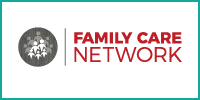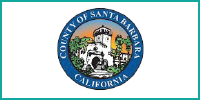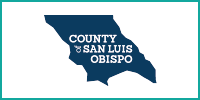Contact Information
Suggestions for appropriate email names:
*Don't click on the links to the email addresses below, they are not real addresses! :)
-
For example, if your first initial and last name:
- i.e., if your name is Jane Doe: jdoe@gmail.com
- if your name is John Smith: jsmith@yahoo.com.
-
Now, it is quite likely that you are not the first person to try such a simple combination. If your name gets rejected initially due to someone else already having that name, don’t worry! Just try adding numbers to the end of it:
- i.e., jdoe1214@gmail.com or jsmith8829@yahoo.com
-
Maybe you use your full first name and last name:
-
Scattering periods (.) or underscores (_) may help too if you have found a name that you like but that has already been taken.
Some examples of inappropriate email names might include:
-
heavymetalrocker88@gmail.com
-
Cutiegirl92@yahoo.com
-
Mr_trouble_4_lyfe@gmail.com
-
Lilprincess420@yahoo.com
- Make sure your name is in bold font and slightly larger font than the rest of your contact information. This makes your name stick out, thus helping your potential employer remember your name easier.
- Also, your name and contact information should be listed on all pages of the resume.
Profile or Objective
- With that being said, a resume should be tailored to the individual job that you are applying to, when possible. For example, if you are applying to a retail job because you have previous experience, you would want to include this relevant information first.
- The more specific you are, the better chance you have of being considered for the job you are interested in, or consider using a resume profile, with or without a headline, instead.
Font/Layout
- You want to use size 11 or 12 font, but size 12 is probably a better choice. Size 12 font is generally the accepted font size when submitting papers to a professor, or writing a letter, and this is also the same for resumes. If you have to, you could probably get away with making your font size 11, but if there is no need to do this (i.e., everything fits on one page perfectly), then don’t chance it.
- Margins should be about 1" on all sides. No less than 0.7".
- Arial and Times New Roman are good choices for font style.
- Do not try to be creative and use some funky font. The employer will not appreciate this, especially if they have trouble reading it.
Body
Bullet Points
- Long paragraphs are not enticing to employers. They can be somewhat difficult to read when an employer is reading over multiple resumes at a time.
- Use bullet points to help you separate your experiences, job duties, and educational background to help make your resume easier to read in a clear, concise manner.
Length
- 1-2 pages is the appropriate length for a resume. If you don’t have a lot of job experience, one page would be best. As long as you include all relevant information, the general rule to go by is the shorter the better. Try to be as concise as possible. If your resume is long and wordy, the employer might skip to a resume that is easier to read.
- With that being said, make sure not to leave out relevant information.
- General rule of thumb: If your resume goes over one page by less than a full 1/3 of a page, try to eliminate unnecessary words. There is no need to waste paper if only one or two sentences fall on the second page. Try to cut it down to one page.
- Another helpful tip is that when you are listing your achievements/responsibilities/duties, try to avoid any lines that only have on word on them. See if you can find a more concise way of saying it so that you can avoid the one word line.
Structure /Timeline
- Put the most important/relevant information first. For example, depending on the job you are applying to, your previous work experience will be the most important part of the resume, so put that at the you’re your education can follow.
- However, if you are applying for a job that requires a specific education requirement, i.e., high school diploma or college degree, you might want to consider putting the education section first, followed by your work experience. When listing education, start with the highest degree, and listing lower degrees to follow. i.e., if you have a college degree, this goes first, followed by your high school diploma or GED.
- The same goes for when describing your experiences or skills, list the most important ones first, in order of the most recent first, and the older jobs following.
Resume Do's and Don'ts
DO:
- When possible, try to list your accomplishments from previous work experience, rather than responsibilities. Responsibilities can sometimes sound dry, but if you have some major achievements that you could include, this will help your resume stand out from the rest of the applicants.
- Most likely you won’t have this problem, but if you have held numerous amounts of jobs, it is not necessary to include all of them. Make sure to include relevant experiences to the job that you are applying for, and other most recent/longest held jobs.
- If you have no previous work experience, no worries! Just include any summer jobs or volunteer work.
- If you do not yet have your degree (high school diploma; college degree) but are working towards it, that’s okay! Just make sure to include the title of the degree and the estimation time of completion.
- If you have a gender neutral name like Alex or Ryan make sure to include the Mr. or Ms. Prefix. This will help the employer avoid any potential confusion.
- Make sure your printer is working properly and prepare a printed version ahead of time. The last thing you want to have happen is your printer to run out of ink and then you have a faded copy of your resume or no copy at all. Employers will most likely not consider you for the job if you hand in a resume that is not legible.
- Update your resume on a regular basis. Include any certifications, courses, additional skills, and other academic achievements.
- Be ware of sample resume templates. Checking out a few of these might be good to get a few ideas about the layout of the resume, but sometimes cutting and pasting a template can cause formatting issues, or may also be the same template that some of the other applicants used. Use these templates only as guidelines.
DON'T
- Do not include “obvious” information. This just takes up space, and goes without saying that you are “available for an interview” or that “references are available upon request.” If you are listing three references on the bottom of your resume, that is perfectly acceptable, but don’t waste your time writing something that the employer already knows.
- Do not include pictures. This will make you stand out, but not in the way that you want it to. Resumes are supposed to be professional, and being creative is usually not the best route to take. If for some reason your employer asks for a photo of you, you can attach it separately in the email or with a paper clip if you are submitting your resume by hand.
- Do not include information that might sound negative in the eyes of the employer. If you did not like your last job, that is fine, but your employer does not need to know this, especially on your resume. Also try to steer clear of this negativity in your interview. If you are asked a question about why you are left your last job or what you didn’t like about your last job, try to think of it in a professional manner and as a learning experience. For example, if you did not like your manager, maybe you could say something like “seeking additional supervision” or “looking for more opportunity for professional growth.”
- Do not include your age on your resume. Employers are not allowed to ask this question as a result of “age discrimination.” There is no need to offer up this information.
- Do not lie! This will only get you in a lot of trouble. It is fine to try to make yourself look good, but stay within the range of reason. If you were a cashier at the store, don’t use words like “managed” or “supervised.” If your employer finds out you lied on your resume and that you do not actually qualify for the job, you will be fired.
- Resumes should not include pronouns, such as “I,” “me” or “my.” This is another case where this is obvious information, and resumes just aren’t written like that.
- Let’s say you worked as a cashier at Pinkberry:
- Instead of saying “I was a cashier”
- You could instead say:
- Operated cash register” or “facilitated cash handling exchange with customers”
- You could instead say:
- Instead of saying “I was a cashier”
- Let’s say you worked as a cashier at Pinkberry:
- Do not use colored paper, fancy fonts, or any other distracting images or elements.
- It is not important to include hobbies, unless these somehow relate to a personal achievement within a specific job. But it is best to try to have them relate to the job and position you held in general, rather than sounding like an extracurricular activity.
- For example, if you are great at arts and crafts, and that is somehow relevant to the position you are applying to “i.e., kindergarten/art classroom assistant,” then is there any way you could tie this into a previous job that you held? I.e., maybe you were a babysitter or a nanny and you could say something like” facilitate arts and crafts activities on a weekly basis”
- No slang, jargon, abbreviations, or other inappropriate statements on your resume. Just as you want your email address to be professional, you want the rest of the resume to also appear professional, responsible and mature.
So where do you start? If you’ve never written a resume before, this process may seem somewhat daunting. But don’t fret. Use the words below to help you brainstorm and to boost up the vocabulary on your resume. Employers look for these kinds of words, also known as “power” or “action” verbs.
Power/ Action Resume Verbs
|
A |
B Budgeted, built, balanced |
|
C |
D |
|
E |
F |
|
G |
H |
|
I |
J |
|
L |
M |
|
N |
O |
|
P |
Q |
|
R |
S |
|
T |
U |
|
V |
W |
Other ways to get started are to create the main areas of your resume.
All resumes SHOULD include:
-
Contact Information
-
Educational Background
-
Work Experience
Other areas that you may want to include:
-
Volunteer positions
-
Certifications or other relevant trainings (i.e., First Aid/CPR Certified)
-
Achievements or awards
-
Relevant coursework (classes that you took at school)
Don’t forget to include contact information for your former employers, the position you held at the company, and the duties you held!
Example:
- Addressed customer questions and complaints
- Assisted guests in serving yogurt and selecting topping
- Demonstrated positive customer service by smiling, being attentive, and welcoming guests into the establishment
- Facilitated cash handling from register to customer transactions
- Operated yogurt dispenser
- Organized inventory and storage room
Proofread
- Read your resume over two, three, or even more times to make sure there are no spelling errors or punctuation in unnecessary places.
- Maybe even have a friend or a teacher or another adult read over your resume before you begin to submit them to potential employers.
- Proofreading is one of the most important parts! Most of us want to rush to have our resume finished, but a single spelling error or misplaced punctuation could be the difference of you landing a job or not. It shows the employer that you do not pay attention to detail, which is what most employers are looking for.
- If you need to take a break and proofread your resume later after you have finished it, that is okay, just don’t forget to read it over at least one more time before you start sending/handing out your resume. A second set of eyes is also always helpful. They can help us catch things that our own eyes may have skipped over.




